BY MIKE METTLER — APRIL 30, 2014
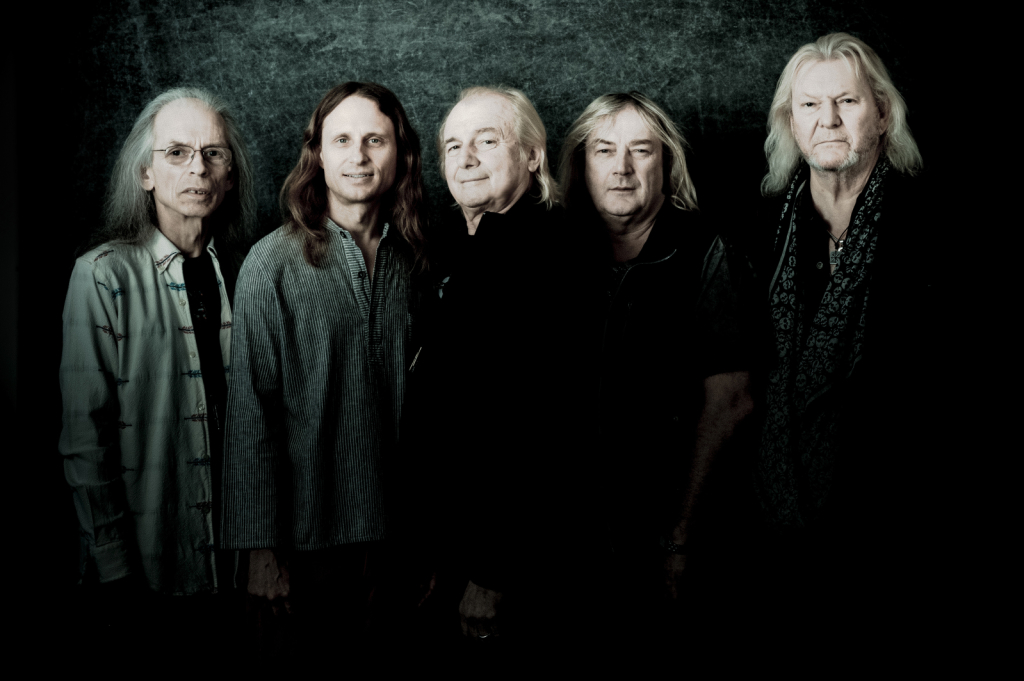
Going for the Five: Yes 2014, from left: Steve Howe, Jon Davison, Alan White, Geoff Downes, Chris Squire. Photo by Rob Shanahan.
“Yes likes challenges.” So says Yes guitarist Steve Howe, and the proof is in the output. The band has been out on the boards in the U.S. and Canada playing a set comprised of three full albums: The Yes Album, Close to the Edge, and Going for the One. On their July and August summer tour, they’ll be doing two full albums: the first-ever full run-through of Fragile and Close to the Edge, in addition to an encore centered on the band’s greatest hits. Plus, an album with new lead singer Jon Davison, Heaven & Earth, was released July 22. And, of course, there are the sonically brilliant 5.1 mixes of Close to the Edge and The Yes Album on Blu-ray as masterminded by Steven Wilson — and more are on the way, with the band’s blessing. Howe, 67, and I talked about those 5.1 mixes, what we’ll hear on the new album, and what constitutes a musical legacy.
Mike Mettler: I’m so pleased to hear that you’re doing all ofFragile on the summer tour.
Steve Howe: Fragile is pretty accessible, and some of it we haven’t played for a helluva long time. It’s going to be a nice mix.
Mettler: Is there anything on it you’re just itching to play again?
Howe: Well, we all like “South Side of the Sky.” Things like “Five Percent For Nothing” are novelties because they’re so short. [“Five Percent” is 35 seconds long.] But we’ll dance through the entire album. It’s a challenge, and Yes likes challenges. Doing three albums was a big undertaking in itself, and we’ll get Fragile sorted. It’s really how close we get to the arrangements. We try to get as close as we can, but that makes different demands on different people, so I hope everybody is able to live up to it.
Mettler: I happen to think the surround-sound mix Steven Wilson did for Close to the Edge is one of the best ones I’ve ever heard. What did you think of it?
Howe: Yeah, it’s amazing. I was involved with some of the mixing, because he wanted some of my input. And since we were both in the U.K. at the same time, I got together with him to listen to some of it and talk about some of the details.
Mettler: What did you like the most about hearing this album in 5.1?
Howe: It’s not an easy question to answer. [laughs] He’s trying to get as close as he can to the original mix with what he was doing with the 5.1. At different times in my life, I’ve liked quadraphonic and 5.1, and so it’s really about having the hi-fi experience. And other times, it’s about having enough time for listening to things that way! But I admire him for doing it, and the label [Panegyric] for pushing to do it and giving us so many options in one release.
Mettler: Right — you have the needle drop, the updated mix, the original stereo, single edits, and the surround. The music on Edge is so enveloping to begin with that Steven’s 5.1 mix really puts us in the middle of what you guys were playing. Any moments you’d consider the most interesting?
Howe: You can hear the separation with the very fast organ playing at the beginning of “Close to the Edge.” It was overdubbed because Chris [Squire, bassist], Bill [Bruford, drummer], and I played together at the front end as a trio, and then we added Rick [Wakeman, keyboardist], who was playing remarkably fast — practically a double-speed version of the riff Chris and I played. But that kind of allows for the separation you can hear there.
Mettler: How involved were you with what Steven did for The Yes Album?
Howe: In a similar capacity. He wanted me to listen to what he did and then give my input. So I sat down with him and listened to it all. And before the Canadian tour started, I sat down with Steve for an afternoon and listened to [the next one Wilson is doing, which hasn’t been officially announced yet; sorry!—The SoundBard]. I did hear a few things, and they were able to take my comments and incorporate them as well as they could accommodate them. They’re very meticulous, in the way they want to match the original, or get as close to the original as humanly possible. Which in itself is a sort of paradox, because youhave the original. [laughs] It’s also an unusual mix, but I’m very proud of Steve and that he’s going the whole distance. I’m just helping him where I can.
Mettler: He was very appreciative of you when he and I spoke about Edge in 5.1. He said having your input was invaluable to help keep things as faithful to the original as possible, and not, to use his words, “modernize it.” You were able to ground what he was doing.
Howe: That’s nice. On [the next one], there’s definitely a sonic improvement. There is a difference. It’s something that’s very, very hard to define — an openness to the higher registers of the music. It wasn’t easy doing all that with the technology of the time. Lining up every machine in the chain had to be perfect, and so did the phasing, the bias, the quality of the tape — it was all relying on so many things that are now blown away because everything is digital, you know. [laughs] It’s less reliant on lining up the accuracies of the tape, lining up engineers, lining up machines, the feed quality, and all the other things I mentioned. It was so boring then, and you just had to put up with it, but it was endless. The speed of the machines had to be so accurate to really be taken seriously, but nothing could ever be 100 percent perfect.
Mettler: There was a DVD-Audio 5.1 mix of Fragile in 2002. Do you think that’s an album Steven will get to revisit?
Howe: Maybe, yeah. That was one I mentioned to Steve. Although I appreciated what Tim [Weidner] did, I was unhappy that he included things that weren’t on the original record. Steven is only committed to having master parts on the recording — otherwise, it trivializes the idea. I was actually quite upset at what was on “Roundabout” — I mean, it’s fun that it’s different, but if it’s different, it’s wrong. I’m not too precious about it because not a lot of people heard it, but Steven’s remix will be thorough and consistent, and he will get around to Fragile. There are some issues with finding all of the masters, but we’ll get there.
Mettler: Is it open-ended that as many of the catalog masters you have in hand will get done in surround?
Howe: I don’t think we should say yea or nay yet, because there could be logistical things or even a question of taste. I mean, providing we don’t make a record sound worse [MM laughs], and we can make some of them sound even better. We’ve all got our favorite ones that we don’t like. I’m not going to say what it is, as there is an album like that which was disappointing sonically, and even the writing was a bit disappointing, and it’s in the ’70s —
Mettler: It wasn’t one that came out in 1978, was it?
Howe: [laughs] I’m not going to even go there! But there is one that’s like that sonically, structurally, and musically — everything about it. It’s not that it’s dreadful; it’s just that we didn’t quite get it right. I don’t know if a remix would make it right, but I really can’t say because I don’t think it could, because if you’re going to be true to the original, then you have to base it on the original.
Mettler: Well, what you could do is give people the original mix, just like you’ve done with Close to the Edge and The Yes Album — here’s the needle drop and the original stereo version, and now here’s the “updated” mix. Will we get to hear Heaven & Earth in surround?
Howe: That’s a good idea. I mean, it’s funny that we’re doing music that’s 40 years old in 5.1, and yet we’ve just recorded Heaven & Earth and Fly From Here a few years ago [2011], and it might be more relevant to do 5.1 with those two releases. We’re a little backed up on time because of the touring, but maybe that could be a discussion later in the year so that we might have a 5.1 out by then. That’s a pretty cool idea.
Mettler: How would you characterize the sound of Heaven & Earth? You worked with Roy Thomas Baker as the producer.
Howe: I would say it sounds pretty different for us. It follows more the kind of material we’re playing with [current lead singer] Jon Davison and what he’s been writing, because Benoit David [vocalist on Fly From Here] didn’t really write with us. But this time, we are presenting a new writer alongside what Chris and Geoff [Downes, keyboardist] and I are writing. It’s the kind of an album that has a lot of freshness, and I think that’s quite a healthy thing. The cross-writing is quite interesting, as Jon has written with most of us. There’s quite a collaborative sense that Jon brought into play a lot. And his voice — we’ve gotten to see the effect of that element because of Roy Thomas Baker as we checked the mixes and got the whole feel. I’ve become quite happy with the album, and think it will be somewhat more of a surprise than Fly From Here.
[All five members of Yes spoke with MM about Heaven & Earth and 5.1-related matters over on Digital Trends—yr. link-savvy SoundBard]
Mettler: Do you remember the very first record you bought with your own money as a kid?
Howe: Yep! I do! There were two, if I’m allowed to mention two — there was Elvis Presley’s album, Rock ’n Roll [1956], with “Blue Suede Shoes” on it. I bought it from a friend who said, “I don’t really like this; do you want to buy it cheap?” And I said, “I’ll buy that!” And there was another friend of mine who had a 10-inch record with the picture of a guitar string on it, a Django Reinhardt record [Django, 1954], and I bought that too. Got them more or less at the same time, and they’re both records that have stayed with me my entire life. And I virtually couldn’t do without either of them. They’re the most remarkable records, because they went so deep to my personality as a guitarist and a musician.
Mettler: You can hear it as part of your DNA.
Howe: It is. Those records are very, very important. But then I bought Teensville by Chet Atkins [1960], and that brought some more into it. And as I’ve said before, Chet Atkins is the most central, singular great guitarists I’ve heard. I’m big on his early stuff, especially the fingerpicking.
Mettler: Earlier, you mentioned how important separation is in a surround mix. Your final thoughts on that idea?
Howe: Surround’s a funny animal. It’s really about separation. The separation is what makes for a good surround mix. There’s some great separation in these mixes, and I suppose that’s the main point of having these 5.1 mixes. Sometimes there’s an emphasis on reverb and an emphasis on “theater”— but 5.1 is also for theater, so in a way, we’re redesigning music around what’s made for a theater. So I say, great! Every time Bach is recorded from a cylinder to a 78 to a 33 to a 45 to a CD to a MiniDisc to an 8-track to a cassette [both laugh] — I mean, Bach’s music has gone through the same kind of transition that our music is going through. It’s keeping up with the times. It’s being reinterpreted by other people, redesigned through great recordings that can be rereleased over time.
And certainly J.S. Bach has one of the greatest, most fascinating histories of being reinterpreted by people like Glenn Gould and many, many others. Bach was one of the most amazing geniuses music has ever had because he had to do all that himself. He was thinking that music written for an organ wouldn’t necessarily stay on an organ — maybe there could be an arrangement for a choir! And that’s what he did himself. He was totally unprecious about the format. The format of the music isn’t important — what’s important is the music. And if it can transcend the performance, then I think you’ve got music that evidently will last.
Tags: 5.1, Alan White, Bach, Benoit David, Bill Bruford, Blu-ray, CD, Chris Squire, Close to the Edge, DVD, Fly From Here, Fragile, Geoff Downes, Heaven & Earth, Jon Anderson, Jon Davison, LP, music, Panegyric, Rick Wakeman, Roy Thomas Baker, Steve Howe, Steven Wilson, surround sound, The Yes album, Yes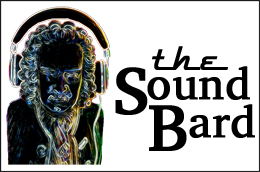
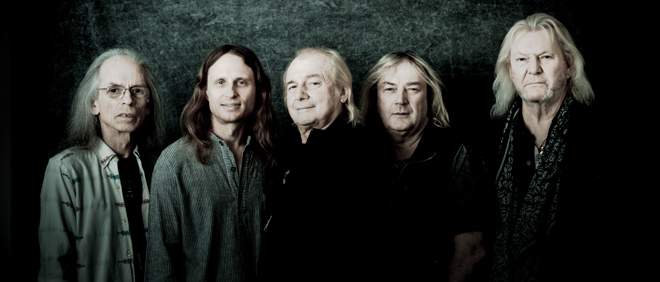
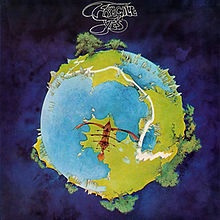

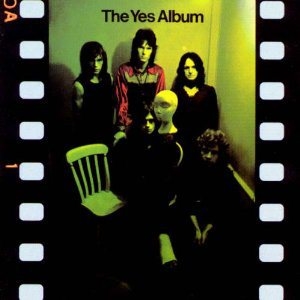
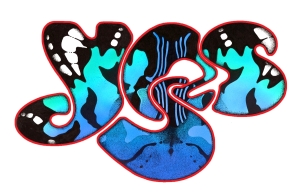
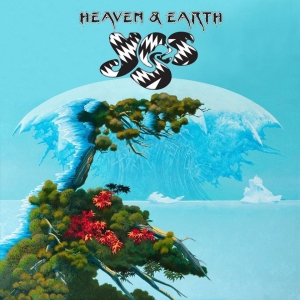
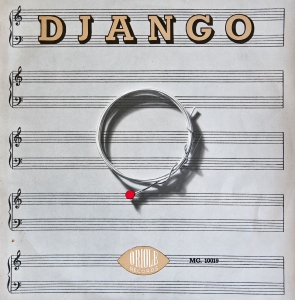
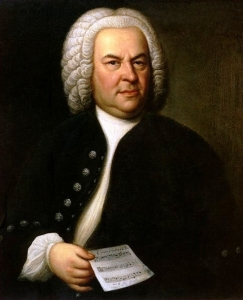
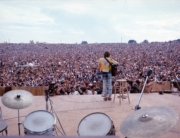
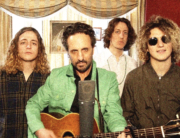
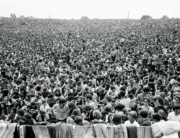
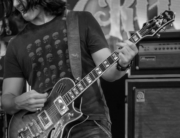
Nice article! I always enjoy the intimacy and ease by which you interview…..Really looking forward to the new album and the tour this summer.